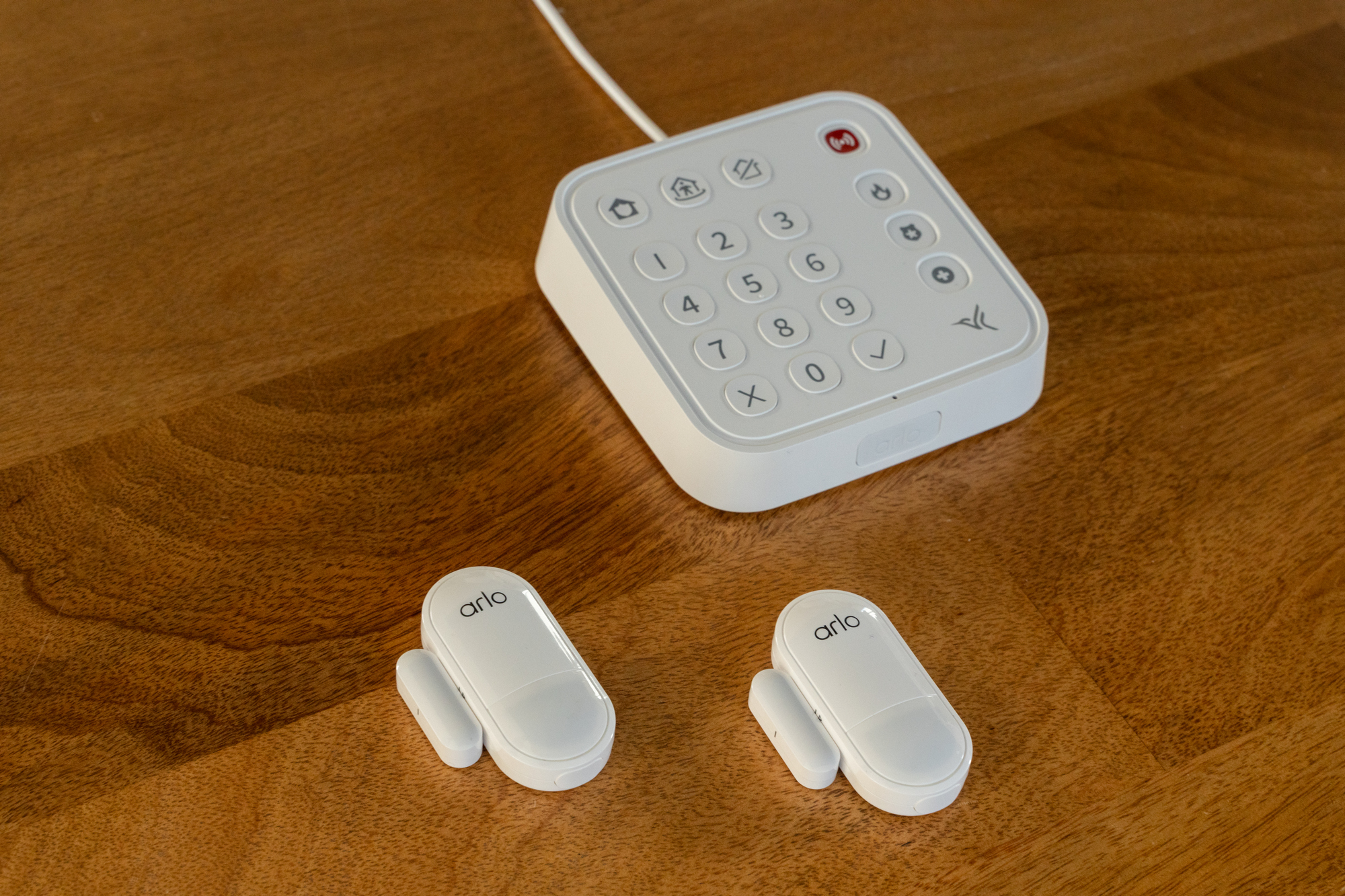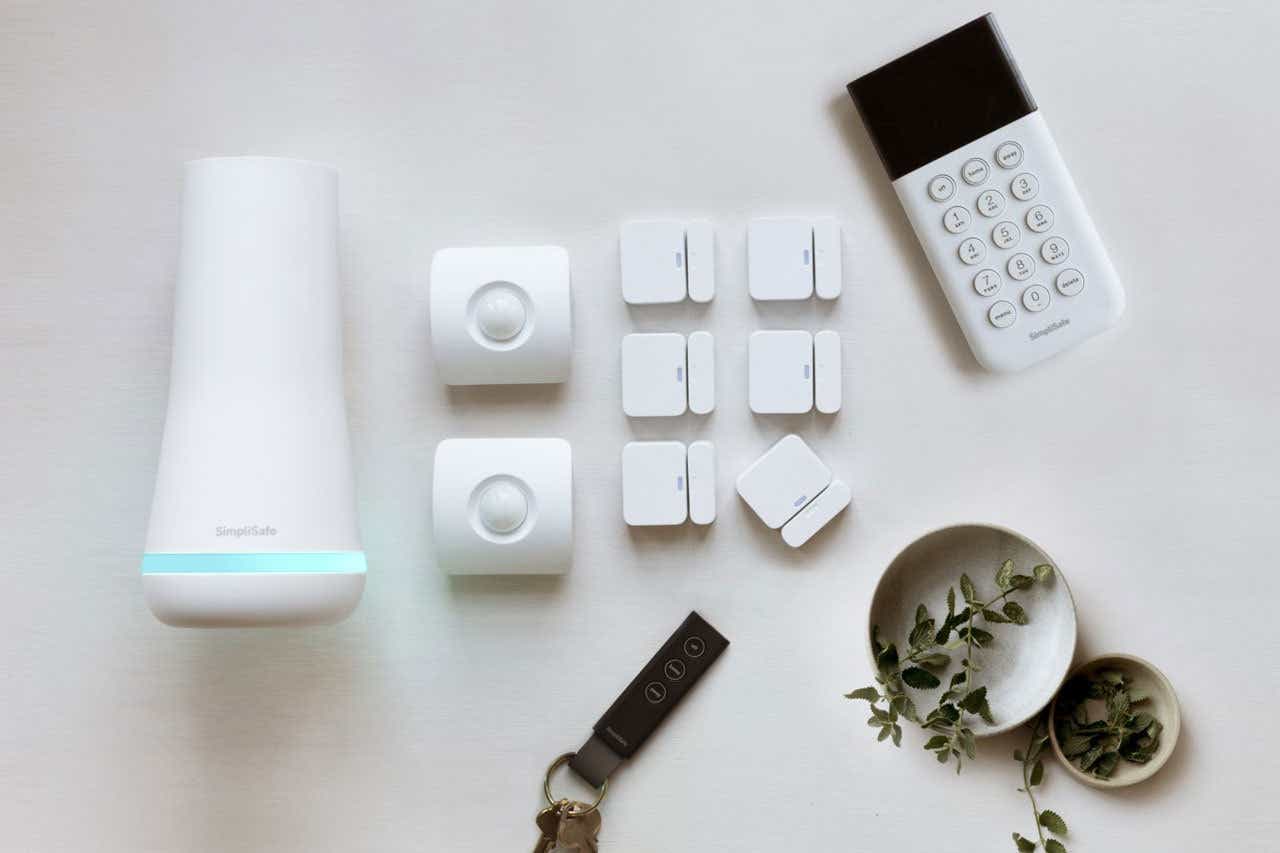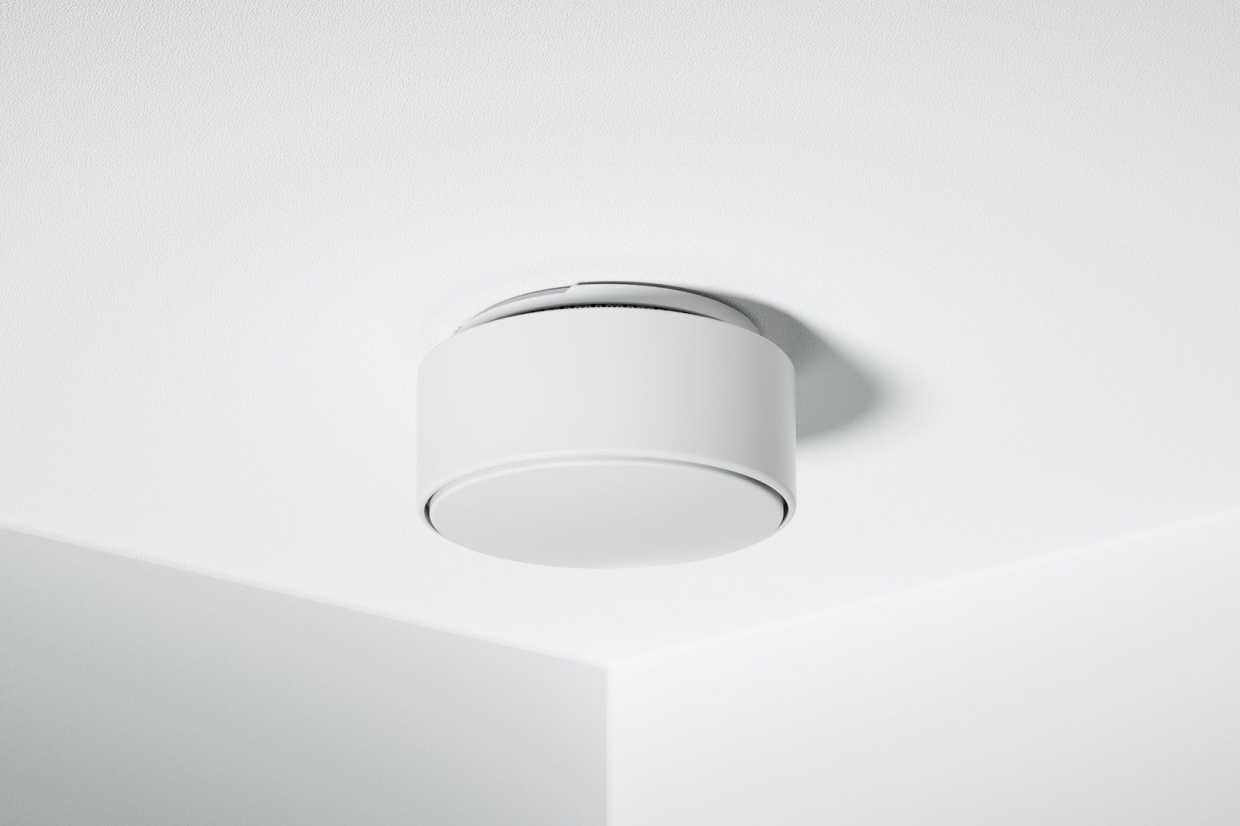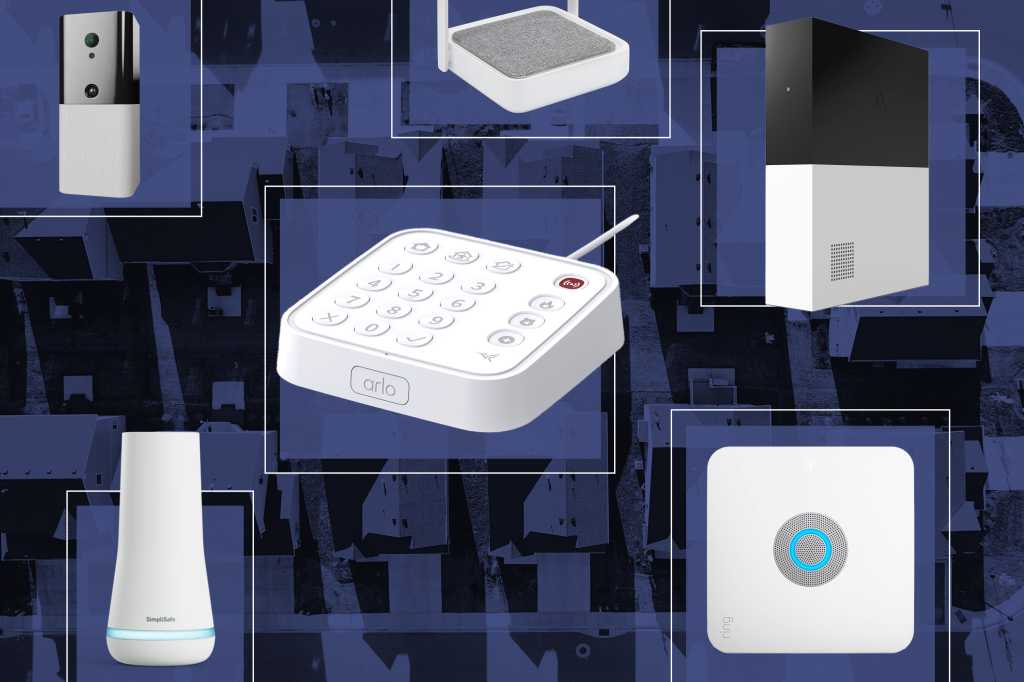Home security systems—once the exclusive domain of high-priced professional installers—have never been more affordable, and the hardware and software is simpler, more intuitive, and easier to set up than ever before. We have other roundups that name the best smart home hubs and components—everything from the best smart bulbs to the best smart speakers—but in this roundup, we name the best do-it-yourself home security systems.
DIY home security systems come in a variety of types, ranging from standalone intrusion-detection setups to multi-input monitoring systems. They offer a sliding scale of protection levels from push-notifications on your smartphone to 24/7 professional monitoring capable of dispatching first responders in an emergency. Choosing the best option for your home and your budget can be tricky, but our roundup brings you the best of the field to make your selection simple.
Why you should trust us
TechHive’s editors and contributors have been building out their own smart homes for many years, and we continuously evaluate the latest hardware and software. We’ve experienced the great products, the not-so-great products, and everything in between. You can trust us to guide you to the right system for your needs.
The best DIY smart home systems
Ring Alarm Pro (8-piece kit) — Best DIY home security system
Pros
- Very easy to set up
- An integrated Wi-Fi 6 router renders it a fantastic value
- Good Wi-Fi performance, and its range can be expanded with Eero mesh nodes
- Expandable battery and broadband backup features
Cons
- Falls a little short of being an all-purpose smart home hub
- Subscription required for local video processing and storage
- Zigbee radio is still dormant, and there’s no Thread radio
Price When Reviewed:
$299.99
Why we like the Ring Alarm Pro
Even though Ring has switched its professional monitoring option to an à la carte plan that will result in a de facto $10-per-month price increase for most users in one year (existing users were grandfathered into a cheaper plan, so there cost won’t go up immediately), you won’t find a more comprehensive collection of products or a better value in DIY home security. Some plans include 24/7 recording for an unlimited number of Ring security cameras (a limited number of wired models). And the Ring Alarm Pro also features an integrated Eero Wi-Fi 6 mesh router.
Given that Ring Alarm systems also have Z-Wave and Zigbee radios on board (although the Zigbee radios are currently dormant), they make for the beginnings of a kick-ass smart home hub, with the Works with Ring program adding support for numerous third-party products, including smart locks, garage-door controllers, in-wall light switches, smart thermostats, and other smart home devices. It’s not quite as powerful a smart home hub as a Samsung SmartThings Station, but it will take you most of the way there.
Who should buy the Ring Alarm Pro
The Ring Alarm Pro is for anyone looking for a smart home security system that offers the option of professional monitoring. Ring also makes best-in-class video doorbells and security cameras, and when you plug an inexpensive endurance-rated microSD card into the Ring Alarm Pro, you get local storage and processing of all the video those cameras capture. The hub also serves as a bridge for Ring’s smart lighting products.
If you don’t need to upgrade your home’s Wi-Fi router, and you don’t mind using a discrete bridge for your Ring smart lighting products, take a long look at the Ring Alarm (2nd Generation), which has everything but the router and the bridge.
Read our full
Ring Alarm Pro (8-piece kit) review
Abode Iota — Best DIY home security system, runner up

Pros
- Setup is as streamlined as it gets, and its all-in-one design makes it even more foolproof
- Pricing is solid, at least for a smaller home
- Plenty of thoughtful extras, including wireless connectivity and battery backup
- Apple HomeKit compatible
Cons
- Integrated camera’s 1080p resolution is no longer impressive
- Integrated siren isn’t as loud as we’d like
Price When Reviewed:
$229.00 (MSRP as of May 22, 2023: $329.99)
Why we like the Abode Iota
The Abode Iota takes the original Abode home security system we reviewed in 2018 and incorporates a 1080p security camera and motion sensor into a smal enclosure. Like the original Abode system, which remains on the market, the Iota can operate as a capable smart home hub, having Zigbee and Z-Wave radios on board; plus, LTE backup in case your usual broadband connection fails (this requires a subscription).
It’s also compatible with Amazon Alexa, Apple HomeKit, Google Assistant, and IFTTT. Abode offers its own smart retrofit deadbolt, and its third-party device support is comparable to Ring’s, including control over Philips Hue smart lighting devices, Ecobee smart thermostats, and even Sonos speakers. You can monitor the system yourself, or sign up for professional monitoring at $24.99 per month or $229.99 per year.
Who should buy the Abode Iota?
The Abode Iota is a strong value because you’re getting a smart home/home security system and a home security camera all in one box. The Abode Iota is broadly compatible with all the important smart home ecosystems, and if you spring for a subscription, you’ll get LTE backup in case your usual broadband connection fails. The hub has a battery-backup feature that keeps it operating in the event of a power failure, too.
Read our full
Abode Iota review
Arlo Home Security System — Best DIY home security system, 2nd runner-up

Pros
- Sensors perform 6 functions in addition to reporting open/close state
- Professional monitoring available for as little as $10 per month (albeit with significant caveats)
- Attractive industrial design
Cons
- Confusing array of subscription plans
- No third-party device support
Price When Reviewed:
$199.99 (Keypad hub with 2 sensors)
Why we like Arlo Home Security
Arlo is something of a rarity in DIY home security systems, in that you can opt to pay nothing for the product up front. Instead, you can finance an assembly of components over 3 years at zero percent interest, with the option of adding professional monitoring at a reasonable cost. We really like Arlo’s unique 8-function sensors that can detect if a door or window is opened, whether or not a room is occupied, if water is accumulating where it shouldn’t be, if ambient light levels indicate you forgot to turn a lamp on, and more. That said, Arlo’s array of subscription plans can be confusing, but our in-depth review lays all that out for you.
Who should buy an Arlo Home Security System
Whether or not cost is a barrier to entry for you, the Arlo Home Security System–especially with an optional professional monitoring plan–offers a comprehensive means of protecting your valuable property. Unlike the products from Ring and Abode, this system can’t also control smart home product, but it’s very easy to use and is very reasonably priced.
SimpliSafe The Essentials — Best DIY home security system, 3rd runner-up

Pros
- One of the quickest, easiest DIY setups you’ll encounter
- Attractive industrial design
- Self and professional monitoring options available
Cons
- No support for smart lighting or any third-party products
- SimpliSafe can be slow to update key components (but SimpliSafe’s new indoor camera is great)
- Best professional monitoring plan is expensive at $30 per month
Price When Reviewed:
$219.96 (Indoor camera included if purchased direct from SimpliSafe; accessories included with the Best Buy and Amazon bundles are each slightly different.)
Why we like SimpliSafe
SimpliSafe is an apt name for this sophisticated yet easy-to-use home security system. The starter kit we reviewed consists of a central hub, three door/window sensors, a motion sensor, a keypad for arming/disarming the system, and a wireless indoor security camera. You can customize your installation with anything else you might need, including indoor and outdoor cameras, a smart lock, glass-break sensors, leak and freeze sensors, a video doorbell, and more–and all these add-ons are very affordable.
The hub has both battery and cellular backups, so you’re protected in the event of both power and broadband outages. You can use either the included keypad or a keyfob to arm and disarm the system. With SimpliSafe’s professional monitoring, $30 per month, an agent can use the system’s security cameras to verify and monitor a break-in and can even warn an intruder that they’ve been detected.
Who should buy SimpliSafe
Anyone looking for an affordable, strictly home security system–in other words, one that cannot also control the broader universe of smart home devices such as lighting, thermostats, and other home components should take a look at what SimpiSafe has to offer. This is one of the easiest to install alarm systems we’ve encountered, and it performs extremely well. But part of what makes it so simple is the fact that you can’t integrate any third-party products with it.
Read our full
SimpliSafe The Essentials review
Minut Smart Home Alarm — Best security system for vacation rentals

Pros
- Monitors noise levels
- Alerts to the sound of smoke/CO detector alarms
- Infrared occupancy sensor
- Temperature and humidity sensor
- Provides security without relying on cameras
Cons
- Very limited smart home integration
- Third-party monitoring costs extra
Price When Reviewed:
$50 for the device, plus $120 per year for service; or $180 per year for service, device included
Why we like Minut
This all-in-one device offers the assurance of home security without relying on privacy-intrusive home security cameras. In place of video, its onboard sensors monitor a room for the presence of crowds and high noise levels that indicate your guests are having a disruptive party with the potential for annoying your neighbors and increasing the likelihood of property damage. You can buy the device for $50, plus $120 per year for the ongoing service; or you can spend $180 for service and get the device at no cost. The higher-priced service includes some extra features that might or might not be worth your while.
Who should buy Minut
The Minut Home Security System is suited to any home, but it will be particularly attractive to people who own rental and vacation-rental properties. In addition to monitoring noise levels, it can detect temperature, the presence of cigarette smoke, and humidity levels that increase the risk of mold. The device can be integrated with Airbnb and other property-management systems, too.
Read our full
Minut Smart Home Alarm review
Wired vs. wireless hub connection
Many smart hubs must connect to your wireless router via an ethernet cable, which limits their placement and, of course, requires a free ethernet port on your router or switch. That can be an issue with puck-shaped routers that have just two ethernet ports–you’ll need to buy an ethernet switch to have enough ports. A smaller number of hubs are wireless and can be placed anywhere in range of the router, increasing your flexibility.
Sensor range
If your home is large or spread out, you’ll need to pay attention to the range that the hub’s sensors support. Hubs may support a wide array of connection protocols, including Bluetooth, Wi-Fi, Z-Wave, and Zigbee, all of which have very different ranges. As with a wireless router, smart hub range can also be impacted by interference and device placement, and smart home devices themselves have different specs, as well. Take the time to look into the detailed specs to be sure sensors and third-party devices will work with your home’s infrastructure.
Battery backup
If the power goes out, your smart lights won’t be useful anyway; but other smart home features, like security sensors, rely on a hub that’s always powered on. Some smart home smart hubs feature battery backups (thanks to rechargeable or disposable cells). Even a short power outage can cause a significant delay while the hub reconnects, so a battery backup makes sense in many home environments. If you like everything else about a particular hub that lacks a battery backup option, consider investing in an uninterruptible power supply to plug it into.
Mobile app usability
You’ll probably be interacting with your hub primarily through its mobile app, so you’ll want one that’s intuitive and powerful, with all the key features you use front and center. App-store screen shots and, of course, our reviews can help you get a sense of what you’re dealing with on the app side of things.
Overall complexity
This is a companion consideration to the mobile app, relating primarily to the audience for whom the smart home system was developed. Is the system geared toward everyday users with limited customization needs? Or is it built with extreme flexibility in mind, to the point where the configuration decisions might overwhelm a novice user? Again, close attention to our reviews can help you gauge how comfortable you’re likely to feel with any system.
Sensor support
A companion consideration to the device support issue above, if you’re in the market for a DIY home security system, you’ll want one that supports all the sensors you need. Most security hubs only work with the sensors made by the same manufacturer, so you can’t mix and match as you would with a general-use smart home hub. Some security systems offer only a very narrow range of sensor types, while others have a wide variety to choose from. You’ll want motion and door/window sensors at a minimum. For added security, consider buying freeze, water leak, humidity, smoke and/or carbon monoxide sensors, garage-door, and glass-break sensors. Make sure the smart home hub you buy supports all the sensor types you wish to deploy.
Cellular radio backup
A security system that can be knocked out of commission by simply disabling your broadband connection doesn’t provide much protection. The best systems will include a cellular backup module that kicks in when your usual broadband connection drops. You should also carefully consider the battery backup consideration above, which is essential for dealing with power outages and is a standard feature on most security-focused hubs.
Professional monitoring
If you don’t want to monitor your own security system 24/7, you’ll at least want the option to engage with a professional security company that can keep tabs on it for you when you’re out on a walkabout. These invariably cost extra, which leads to our final consideration….
Service plan costs
Service plan costs vary widely from system to system, and many vendors offer a range of plans to choose from. Some systems will work without a service plan at all, allowing you to self-monitor. Some require a plan to function at all. Also note that lower-tier service plans might provide only cloud storage for your security cameras. Wyze Labs offers one of the least-expensive plans: $9.99 per month with no long-term commitment, or $99.99 for a full year. Price out service plans carefully, taking the overall quality of the system into account, before you pull the trigger.
Other notable smart home systems we’ve reviewed
We’ve evaluated lots of other DIY smart home systems. If none of our top picks check all the boxes for you, take a look at these other products.
- Abode Smart Security Kit is virtually the same as the Abode Iota Security Kit, with the key difference being the integrated security camera integrated into the latter product. Both packages use the same accessories and sensors and support the same monitoring plans.
- Ecobee takes an interesting approach to home security, integrating its smart home hub into the company’s top-shelf smart thermostat. Ecobee also has a great home security camera, and the entire system is HomeKit compatible.
- Tapo H100 Smart Hub is a budget-priced home security that’s compatible with a very limited number of security products from the same manufacturer, and it doesn’t support security cameras at all. It’s main attraction is its low price tag.
- Roku Home Monitoring SE is yet another low-priced home security system, but with a twist: Roku sources this system from Wyze Labs and puts the Roku brand on it. Affordable professional monitoring is available.
- Wyze Home Monitoring is the same system as the Roku Home Monitoring SE, but Wyze manufactures both products. This is a low-cost security system with an extremely affordable professional monitoring subscription.

